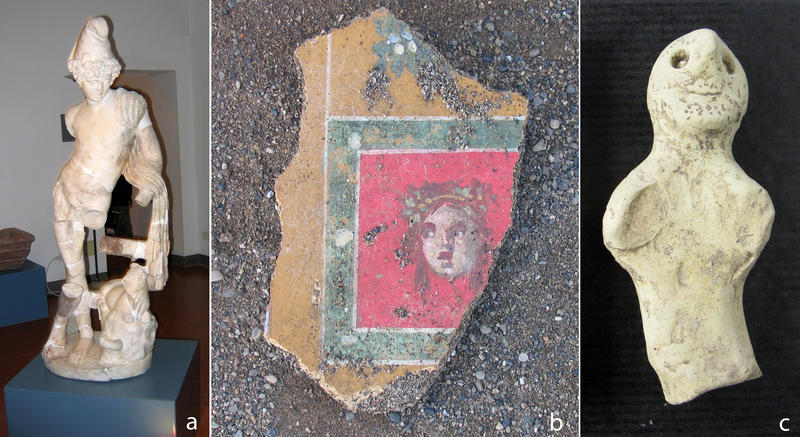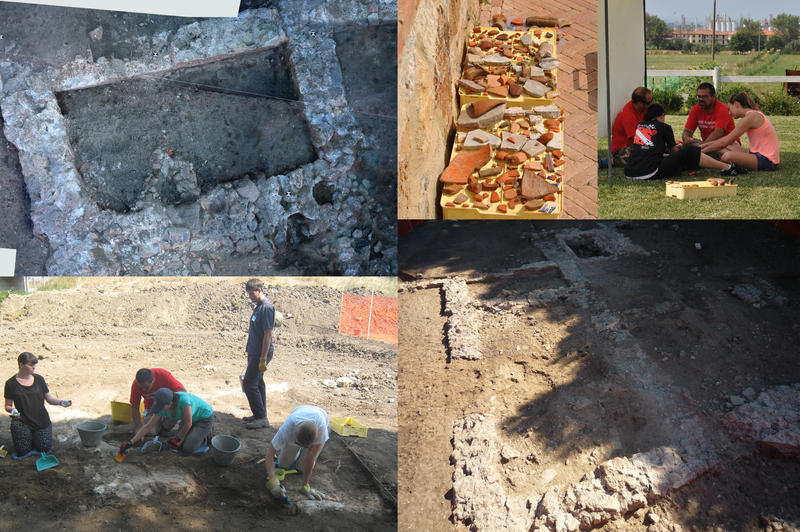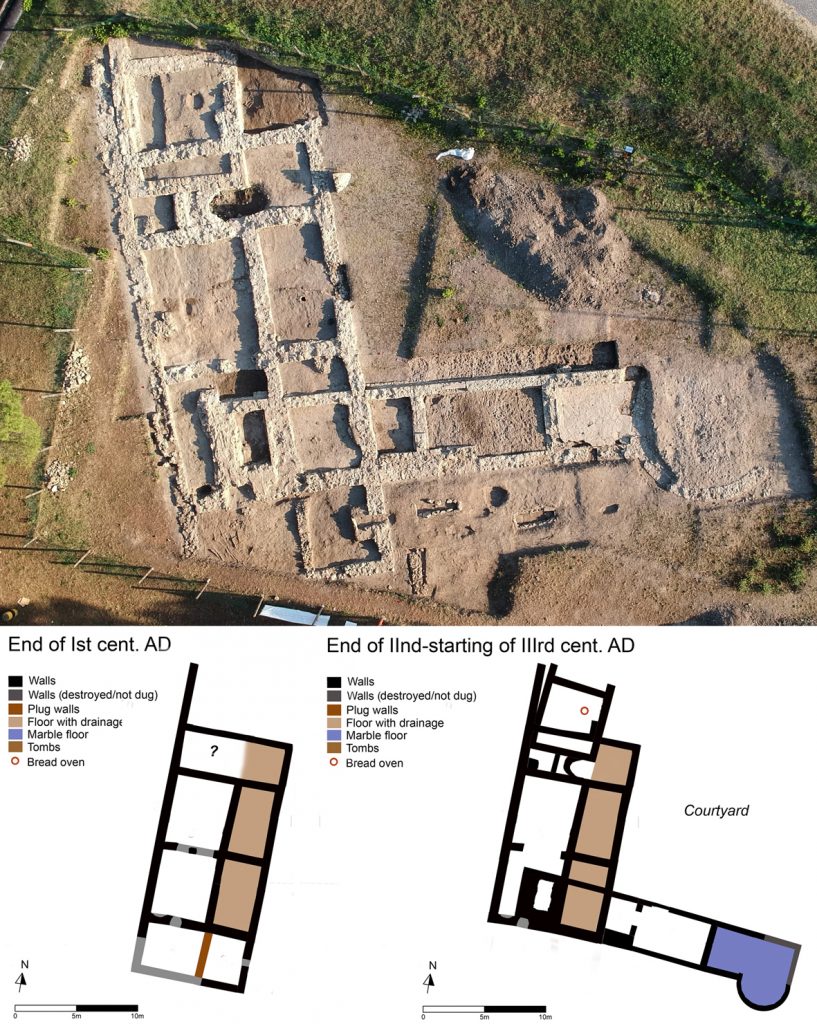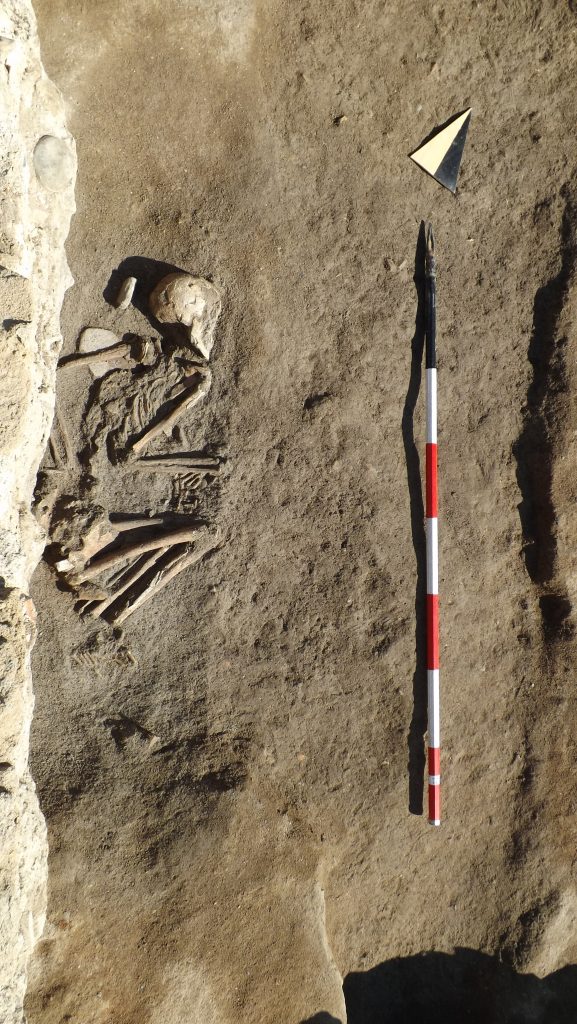Fieldwork
This listing expired on June 19, 2020. Please contact vadavolaterrana@cfs.unipi.it for any updated information.






Location: Vada, LI, IT
Season: July 5, 2020 to July 25, 2020
Session Dates: Single session (July 5-25, 2020)
Application Deadline: June 19, 2020
Deadline Type: Rolling
Website: https://www.diggingvada.com
Program Type:
Field School
RPA Certified:
No
Affiliation:
Chair of Ancient Topography and Underwater Archaeology, University of Pisa
Project Director:
Prof. Dr. Simonetta Menchelli, University of Pisa
Project Description:
Our project: Vada Volaterrana. A Roman harbour in the Mediterranean Sea
Our project stems from the archaeological researches the Laboratory of Ancient Topography of the University of Pisa has been conducting for over twenty years at St. Gaetano di Vada (municipality of Rosignano Marittimo, Livorno), along the coast of Tuscany. Here a settlement of considerable interest, related to the harbour system of the famous Etruscan and Roman city of Volterra, has been found and partially excavated.
Now the Laboratory of Ancient Topography is running a Summer School opened to foreign and Italian students of archaeology, who wish to live an experience of archaeological excavation in Italy.
During three weeks the Summer School’s students will practice with all the different activities an archaeologist usually does into the field and in the lab, from the discovery of a new site until its stratigraphic excavation and study:
1. Ground Penetrating Radar (GPR) analysis,
2. Stratigraphic excavation, consisting of digging in the site of Vada Volaterrana and related labs (GIS lab, pottery lab),
3. Anthropology Lab,
4. Flotation, run by professor Stephen Carmody (Troy University, Alabama).
Lectures will focus on the history and archaeology of the harbour of Vada Volaterrana and its surroundings and on archaeological methods, in order to explain students all the activities they will face during the excavation on site.
The roman harbour of Vada Volaterrana: old and new researches
The Etruscan and Roman city of Volaterrae – the current Volterra, in the core of Tuscany – was connected to the coast by the Cecina River valley; the main port, whose name was Vada Volaterrana, was located further North of the mouth of the river, at S. Gaetano di Vada.
The quarter was built, according to a plan, during the Augustan age. Many building have been unearthed in time: two thermal baths, a large warehouse (horreum), a water tank, a monumental fountain – used for watering the animals – and the head office of the guild (collegium) in charge of port activities’ management. The corporation’s member were worshippers of the Eastern god Cibele, whose lover Attis’ marble statue was found in the cold pool (frigidarium) of the main bath house, where it was intentionally thrown in broken pieces in Late Antiquity.
A recent GPR (Ground Penetrating Radar) survey allowed us to identify in the Southern sector of the harbour settlement, the structures of more buildings, whose excavation started in 2013.
The building under excavation
A GPR (Ground Penetrating Radar) survey run in 2012 in the Southern sector of the harbour settlement allowed us to identify undiscovered structures, whose excavation started in 2013. Starting from 2016, drone’s survey have been run at the end of every campaign, in order to get a detailed plan of the newly found buildings.
At the end of the Ist cent. AD a big rectangular building was erected in the area currently under excavation, previously empty of any structure. The building, whose function is still unknown, is made of six rectangular rooms. A courtyard was perhaps located next to the Northernmost perimeter wall of the building. Three rooms have floor made of more layers of clay mixed with pottery fragments. The attempt to made well drained floors seems to testify the use of these rooms for the storage of foods which needed protection against humidity, like corn.
Since 2016 we understood this building underwent more interventions, meant to change its previous plan and – likely – its functions.
In 2019 our excavations provided new and very interesting data about the changes the rectangular building underwent between the IInd and the VIIth cent. AD.
In the North-Western sector of the excavation 2019 our most important goal has been understanding that the bakery – already discovered in 2016 – was built between the end of the IInd and the starting of the III cent. AD, along with the earlier rooms added to the South-Eastern corner of the rectangular building.
The cemeteries
Since the very start of the our excavation in 2013 , tombs were dug out. So we understood that during the Vth-VIth cent. AD – the building being already abandoned – the area and the structures were used as a cemetery – a common practice in Late Antiquity.
Despite containing no grave-goods, the burials allow us to get a privileged insight into the local community life. Tunisian amphoras for olive-oil or fish sauces were often used as coffins for burying children , while simple graves dug in the soil were used for adults.
The tombs are related to burials of men and woman whose age’s range is 35-45 years old. The three amphora tomb hosted children less than 3-4 years old.
A new burial
The excavations carried on in the Northernmost sector of the site put on light the burial of a woman, 35-45 years old. The skeleton’s position is very interesting: the woman was buried face down, with her left arm back. These features are very uncommon in Roman Imperial Age tombs. Stratigraphic data tell us the woman died between during the IInd cent. AD and her tomb was dug next the Eastern wall of the most ancient building identified in this sector of the Vada Volaterrana settlement.
If you want to learn more about 2018 excavation season download the “Vada 20189report” (see above).
Period(s) of Occupation: Late Bronze Age, Roman Imperial Age and Late Antiquity
Notes:
Excavation, tombs, anthropology, flotation, survey, GPR analysis, drone survey, Late Bronze Age, Roman age, ports, warhouse, trade, amphoras, pottery, Italy.
Project Size: 1-24 participants
Minimum Length of Stay for Volunteers: all the period (3 weeks)
Minimum Age: 19
Experience Required: No prerequisites are requested for the field school; students will be trained for all the activities they’ll experience. Our summer school welcomes University students in Archaeology, Classics, History, and Arts at the undergraduate and graduate levels.
Room and Board Arrangements:
Students and staff will stay in a new agritourism, housed inside a restored typical Tuscany farmhouse, located in the countryside East of the town of Rosignano Solvay (municipality of Rosignano Marittimo, Leghorn), close to the railway station (2 miles/3,2 km far), the city center (2,2 miles/ 3,5 km far; ) and the beach (3 miles/4,8 km far). The archaeological site of Vada Volaterrana is about 4,3 miles/7 km South. Students and staff will stay in apartments with kitchen-living rooms, bedrooms and bathrooms for 3-5 persons. Internet access and laundry will be available at the accommodation. The food will be provided by a local restaurant specialized in Italian cuisine, located close to the excavation (about 4,3 miles/7 km far from the accomodation). The breakfast, consisting of coffee or cappuccino and pastries, will be consumed at the accommodation; lunch which will be consumed on the excavation (students and staff will be provided with lunch-boxes). Dinner, consisting of typical Italian courses, will be held at the restaurant (the cost of the summer school includes water; all other drinks are excluded). Every effort will be made to accommodate students with severe food allergies (nuts, shellfish, etc.); students with severe food allergies are required to communicate their specific dietary restrictions to the field school’s organizers immediately upon admission. We will try to accomodate individual lifestyles and dietary choices (vegetarianism, veganism, etc.) too. Meals are provided during weekends, when the field school is not in session. At request, it will be possible - every three or four days - going shopping; students may communicate staff members what they want to buy. Cost: €1,990 (around $2,1000) for 3 weeks. These fees will cover transports from and to the site, housing, meals, excavation, laboratory equipment, and staff costs. There are no application fees. International travel to Italy is not included in these fees and is the students’ sole responsibility. For the 2019 campaign, Pisa University will grant two 500.00 euros scholarships. This money will be used to pay part of the summer school's fee, which will be reduced to 1490.00 euros. The summer school staff will unchallengeably choose the persons to whom give the scolarships.
Academic Credit:
In order to enable students to obtain credits from their Universities, the Laboratory of Ancient Topography of the University of Pisa will issue signed certificates for all the activities made during the Field School, specifying type and hours, for 6 Pisa University credits. Participant will be examinated in order to get the credits. The exam will consist in the following parts: 1. Oral examination. 2. Practical test. The student will got a vote of a maximum of 30 points, 18 points being the pass mark. credits offered by Pisa University . Tuition is None .
Prof. Simonetta Menchelli
Via Pasquale Paoli 15
Pisa
Pisa
56126
Italy
Phone: 3.93385E+11
The AIA is North America's largest and oldest nonprofit organization dedicated to archaeology. The Institute advances awareness, education, fieldwork, preservation, publication, and research of archaeological sites and cultural heritage throughout the world. Your contribution makes a difference.